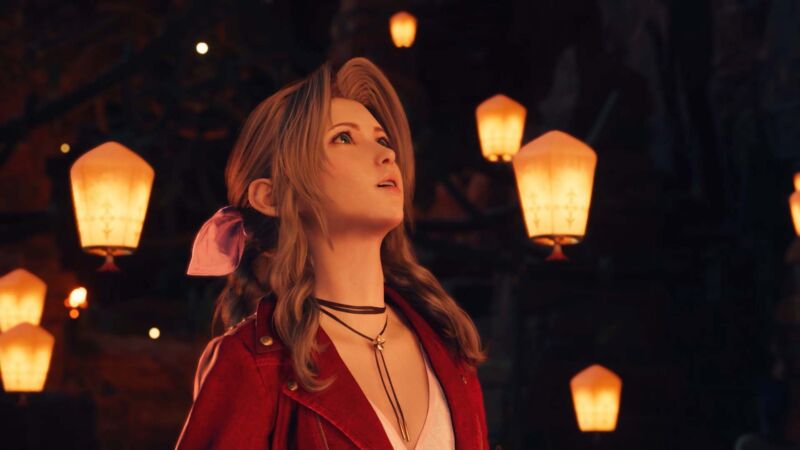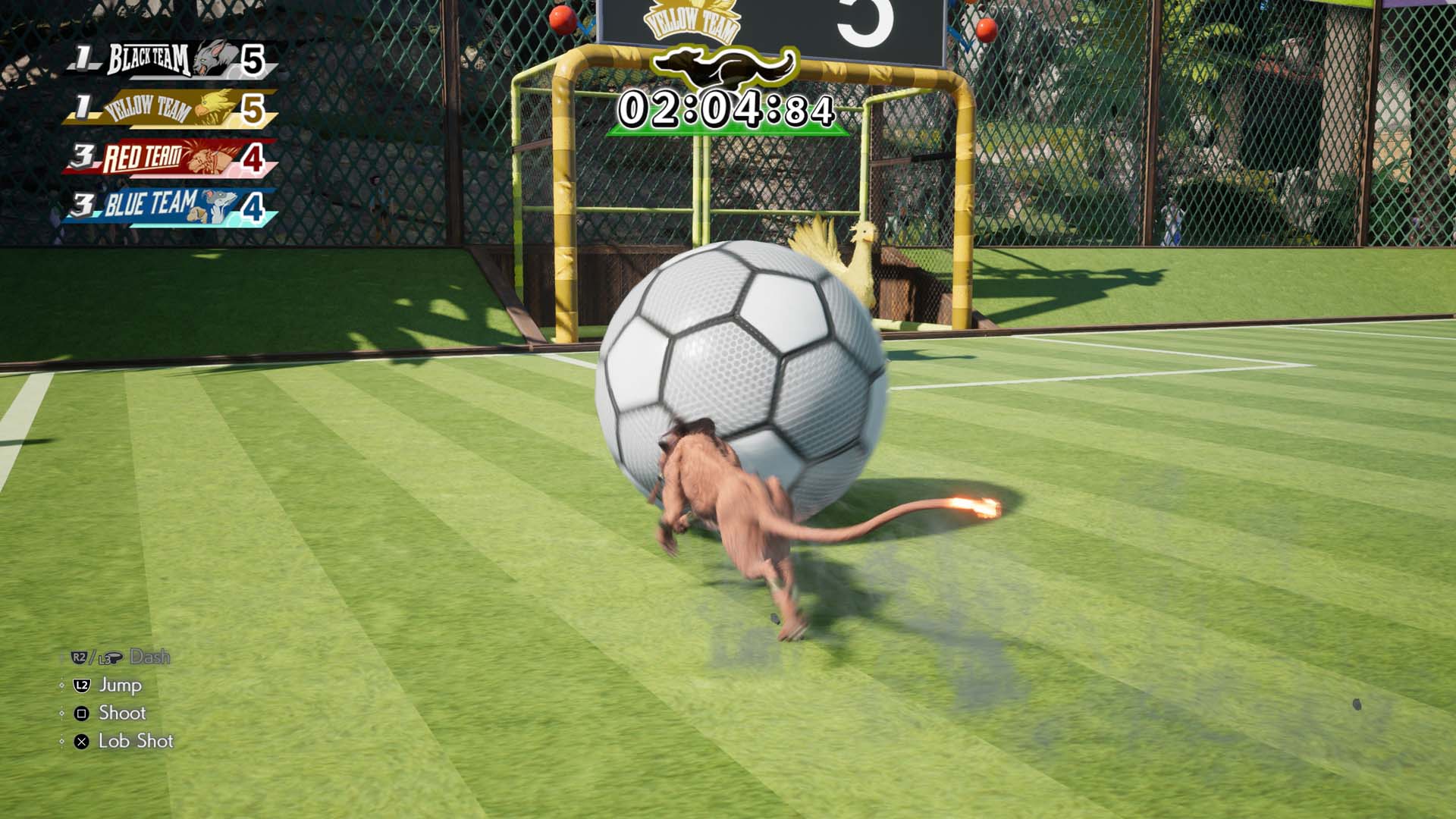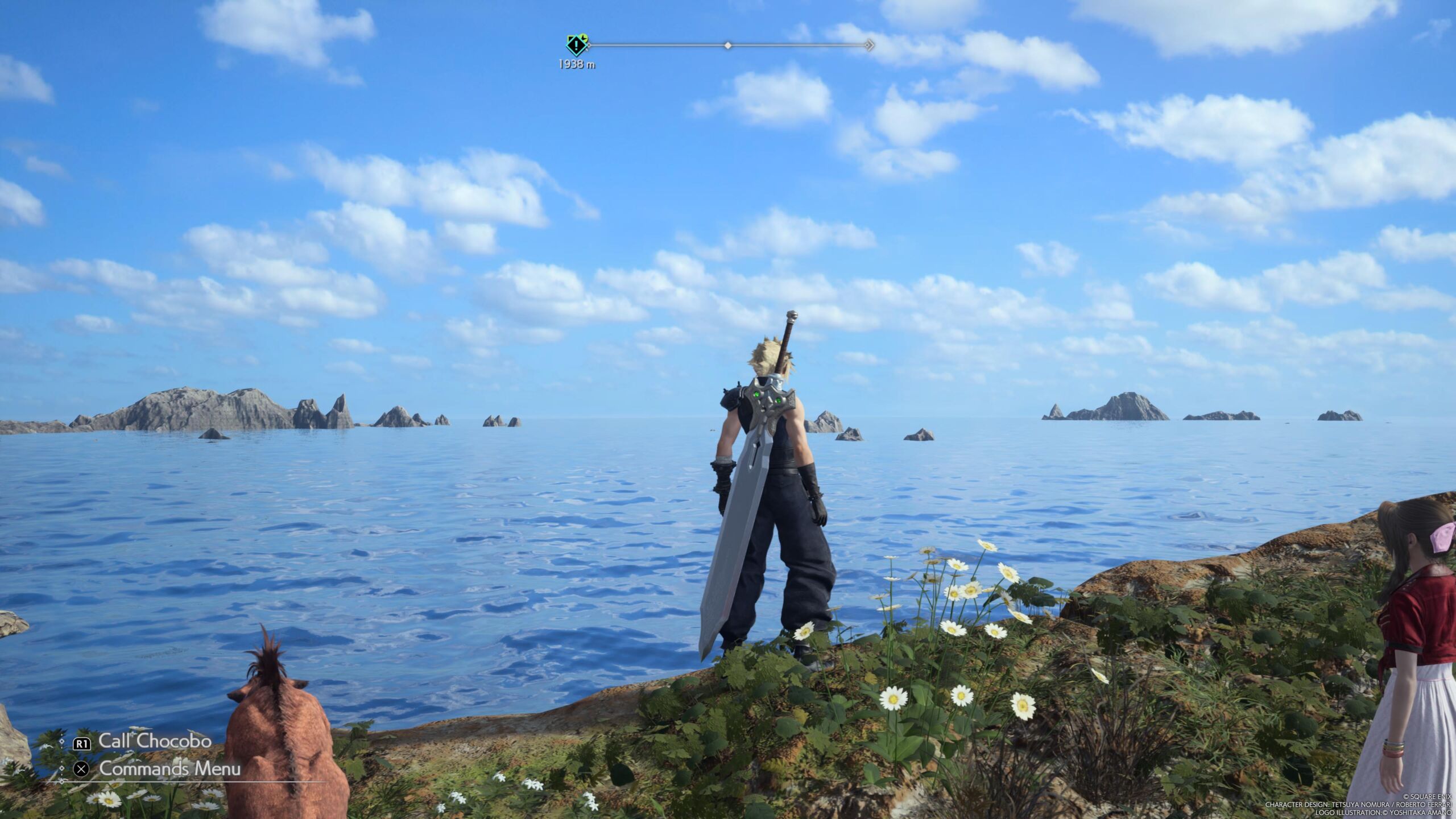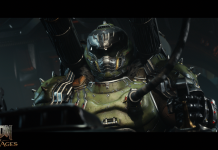In search of lost basement time, in a semi-review of Square’s semi-remake.

It is said that you can’t go home again, and now I am reminded of how true that is. I recently spent more than $500 on a PlayStation 5, largely spurred by an opportunity to play and review Final Fantasy VII Rebirth (releasing February 29), a title that activated youthful memories. This was a big mistake. Perhaps you can learn from it.
None of this is particularly the fault of Rebirth. Even as I could only bring myself to put about 12 hours into it over the space of 11 days’ early access, I understood that those who truly cherish the original game, and still enjoy Japanese role-playing games (“JRPGs”) in general, will find a lot to love here. It’s a beautiful-looking game that runs smoothly on its quality-minded setting. The soundtrack is largely lovely, and I found myself humming the world map tunes while walking my dog or making coffee. Lots of things from the original that would be hard to wade through now, like random encounters and monotonous turn-based combat, have been transmuted into more tolerable forms here. The number of things you can do in this game, just from looking at screenshots of what’s ahead, looks like a true embarrassment of riches.
I am sure that if I harbored stronger memories of the original game, had kept up a JRPG habit over the last 25 years or so, or perhaps had started with the earlier Remake chapter, I might have found more to grab onto in Rebirth. Most people aren’t going to gamble $70, let alone $500, plus dozens of hours, on the chance they’ll be magically transported to being 16 again, with the requisite free time and adolescent brain chemistry that helps one relate to a ragtag set of friends striving against cartoonishly oppressive villains.Advertisement
But I did. I took on Creative Director Tetsuya Nomura’s suggestion that “new players might even enjoy starting their Final Fantasy VII journey” with Rebirth, and I must politely disagree.
Before we go on, let me make a few things clear:
- I have no idea what happens to Aerith (Aeris, to some), because that is seemingly the very end of this game, which I did not reach. The “Rebirth” title, and Remake’s literal battle against the concept of fate, suggest it could be altered. Spoil it elsewhere at your discretion.
- Much like playing Remake before Rebirth is highly advisable, I’d suggest checking out our Remake review for a much deeper look at this series as a whole. I won’t go nearly as deep into all the choices and details here.
- This is not a typical “review,” meant to consider how a broad audience might receive a game on its merits and choices. This is one dork’s tale of trying, and failing, to recapture a certain game habit and maybe a sense of wonder.
Final Fantasy VII Rebirth “Final Trailer.”
See that dolphin? You can ride it.
Rebirth is the second of Square’s epic remaking of Final Fantasy VII (FFVII). Remake covered the tutorial-ish Midgar section of the 1997 game, which originally took something like four to six hours for most players. Rebirth starts where the original game opened up after Midgar, foisting your party out into a world it could explore at its discretion, prioritizing whichever quests it wanted. You and your party, a group of eco-terrorists dubbed Avalanche, are trying to stop megacorp Shinra from draining the world of its essence for power and villain Sephiroth from looking impossibly cool as he becomes a godlike figure through some kind of alien meteor… planet lifestream… deal.
After a roughly two-hour opening sequence that’s part tutorial, part flashback to the Nibelheim Incident, your party is let loose. It’s a gigantic world to uncover, with so many things to do it verges on parody (like many other aspects of this game). You start in a bucolic town with an on-the-nose name of Kalm, then wander into vast fields of green grass and craggy rock.
Once you pick up Chocobos to ride and set up a few fast-travel points, you’re free to become whatever kind of FFVII player you want to be. You can check off every single data point, rest stop, “Fiend” battle, shrine, Moogle house, “Chocobo Intelligence” point, and fetch/kill quest offered up by NPCs. You can ride around aimlessly, picking up crafting materials and leveling up from battle encounters, or run to avoid them entirely. You can fine-tune every aspect of your characters’ build, or you can have the game automatically assign some of them. And, in a modern grace this author found very handy, you can change the difficulty at any time, which significantly lowers the skill wall presented by some Fiends and bosses.

That’s just the section I explored. At 12 hours, I was nowhere near what most regard as a highlight of the game. The Gold Saucer is an epic playland where you can ride a rails-shooting roller coaster, race Chocobos, race dolphin-like water mammals, pilot a spaceship in battle, explore a haunted house, do some target-hitting platform challenges, engage battle bots that pay tribute to the original FFVII’s low-poly look, and more. It’s expected this Rebirth will cover events from the original game up to the Forgotten Capital area, though the exact order may change.
- One of the early battles, with teammate Sephiroth (!), that teaches you some of the character-switching skills. Square
- Pretty battle scene. Square
- Yet another visually engaging, if potentially brain-taxing, battle sequence. Square
- Bring it on. Square

Time battle, in more ways than one
The experience of playing the interactive core of the game is quite different from FFVII. “Active Time Battle” takes some getting used to if you’ve not played a modern Square game, forcing you to do a bit of dodging, some timed blocking, a lot of field positioning, and lots of character swapping to beat tougher enemies. You can only get at your stronger abilities, spells, and items after you’ve hit an enemy with enough attacks or taken enough damage yourself to fill an ATB bar. The original JRPG stress of having to wait your turn and wondering what an enemy is going to do has been replaced by the stress of whether your teammates can keep themselves alive long enough for you to earn the right to use a potion.
This “earn your goodies” system does force some interesting choices and novel strategies. It might also drive you to simple button-mashing, which can oftentimes get the job done, or let you explore the semi-turn-based battle system, which feels underdeveloped and brutally slow in a long game. At about the 10-hour mark, I had a much better handle on what was going on in Active Time Battle combat than I did at the start. This was despite the game rather than thanks to it.
The early game drops documentation and hints on you in pop-in sidebar text, like a front-end loader might drop gravel on the road. Getting good requires the mental RAM to hold all the various abilities and spells you’ve set up for each character, in addition to the weaknesses and invulnerabilities of different enemies. It’s a lot, but probably more rewarding once you’ve acclimated to it than the old turn-based ways.Advertisement
There is a plot, so much plot, stuffed into this game. There are characters, and they are far more developed, visually and in interactions, than the addled asides they were given in the original. I spent my first few hours with the English voiceovers, then switched to Japanese voice with English subtitles, and greatly preferred the latter. I took a bunch of screenshots of dialogue I found laughably clunky or cringe-inducing, but there’s not much point in presenting them. When Sephiroth asks Cloud how it feels to return home, followed way too quickly with “I wouldn’t know, I didn’t have a home,” it’s either a revealing moment or the first of many Telling Instead of Showing bits to come, depending on what you brought to this.
It’s a loud game, visually and sonically. It’s campy, with outlandish costuming and plot logic held together with misty green baling wire. What the main villain is capable of doing at any given moment depends on the pacing needs of the story. I knew all this about the original; this game largely offers a richer, more expansive expression of all those flaws. Some critics would say it’s far too expansive, and I might agree with them; it’s strange to put a dozen hours into something and still be getting notifications about basic game mechanics you’re encountering for the first time.
Lots of people love those flaws or don’t think they are flaws, or believe the game has much more to offer despite them, and would never want to see the balance significantly changed. I thought I would be one of them, still, but I am not.
- Presented without comment.
- This is roughly the moment when I realized there was no possible way I was going to make substantial progress in this game before the review embargo ended.
- There are moments that you just let pass by you.
- If nothing else, the time they put into making characters like Aerith have real faces, with real emotions, is impressive.

I’ll always have that basement
Here again, like some NPC given one line to say in a Final Fantasy town, I must suggest starting with Remake, if these changes and similarities are at all surprising to you. I do not think Rebirth is a good jumping-on point. If you want to learn the new systems, you should start with a more gradual incline. If you love the story beats of FFVII, you’ll want to revisit them all. If you’re eager to spend more time with these characters, go back to the beginning with them. At a minimum, play either of the game’s demos before committing to a purchase.
Probably only a handful of people need this advice or are going to end up in my situation. But I wanted to give it a shot.
I had deep, fond memories of playing as much FFVII as I could in a friend’s basement, the only friend who had a PlayStation. I’d dropped hundreds of hours into multiple run-throughs of its predecessor, Final Fantasy VI (or III as it was known on the Super Nintendo). I considered Chrono Trigger and EarthBound to be works of art that would someday get their wider due (and was kind of right). I thought of JRPGs as games too sophisticated for the wider video game audience. Those run-and-jump normies and sports-game jocks could never appreciate the opera-like drama, the dense battle prep, the myriad little secrets and easter eggs—not like I, an underperforming, alienated teenager with a deep hunger for something bigger than his small town.
Most importantly, I had all kinds of “sure, I’m doing homework” hours to drop into VII. I negotiated which save slots I could use with my friend, and we’d occasionally take over each other’s random game battles (or “grinding”) when the other one wanted a Diet Coke or another scalding-hot, previously frozen thing from the toaster oven. Advancing through VII provided the kind of immediate, measurable gratification that school, or anything at that age, never provided. It was a way for two friends to bond over something they pretended they had to accomplish, a crutch I still lean on to this day.Advertisement
Watching YouTube videos of the original game now, I can’t believe how unsophisticated the combat seems; it feels like there are three or four menu options missing. The story felt like a rollercoaster back then, but I now see the pace as something like a dissertation defense, with the questions placed at random. The graphics and sound were as good as they could be for that time, and that’s where I should leave them. Some of that has to do with CRT televisions, but a lot more of it is expectations.

Good for them, not for me
Maybe you’ve already figured out that what really resonated with me about the idea of revisiting FFVII, and JRPGs generally, was being young and having lots of free time and a sense of control over my destiny while playing time-consuming games about young people fighting to control their destiny.
FFVII Rebirth is a wholly different game than FFVII, with different battles, exploration, cameras, story, character space, and a much improved audio-visual experience keyed to the story beats of the original. For anybody starting entirely new with FFVII, and especially those with a higher tolerance for Kingdom Hearts-ish messiness, it’s almost certainly a better experience. Friends who kept up with JRPGs tell me they loved Remake, and eagerly, if cautiously, await the changes Tetsuya Nomura is certain to bring to Rebirth.
I, meanwhile, have learned some important lessons about memory, time, and leaving well enough alone. I hope a lot of people enjoy this multi-year celebration of both FFVII and modern JRPG possibilities, at whatever pace and price they can afford. What I should probably do is connect with that old friend and see how he’s doing.




